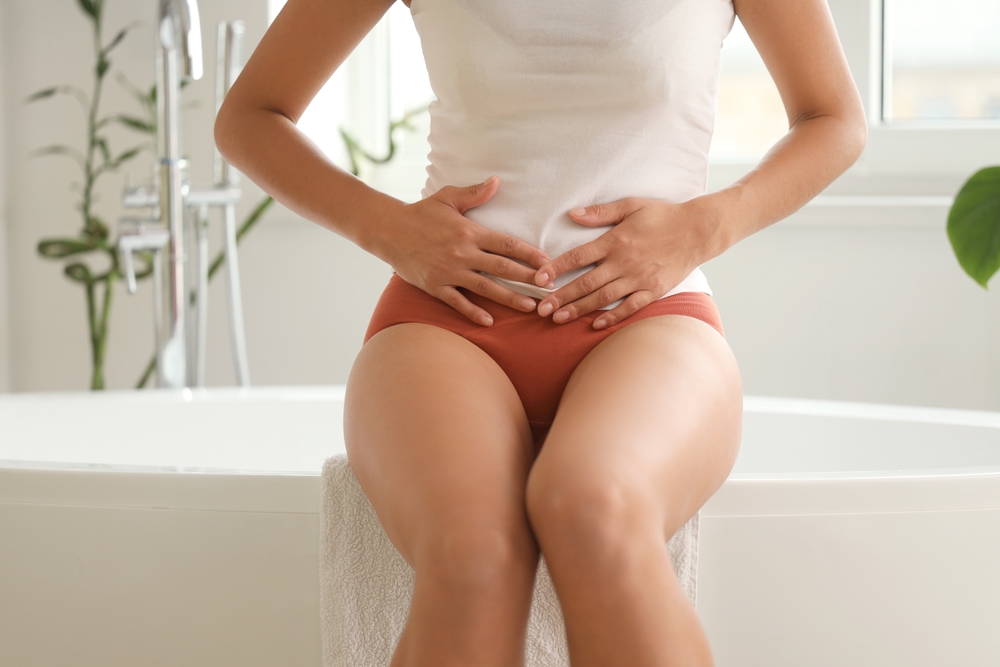That uncomfortable itch. The unusual discharge. The burning sensation that makes you wince when you pee. If you’ve experienced these vaginal symptoms, you’re far from alone. Nearly 75% of women will deal with at least one vaginal infection in their lifetime, and many suffer through them repeatedly, wondering what they’re doing wrong.
Here’s the frustrating truth: some of your most innocent daily habits might be the hidden culprits behind these recurring infections. The same routines you think are keeping you clean and healthy could actually be throwing your delicate vaginal ecosystem into chaos.
Your vagina is like a finely-tuned rainforest with its own balanced ecosystem of beneficial bacteria. When that balance gets disrupted, opportunistic organisms seize their chance to multiply out of control, resulting in infections that range from annoying to downright miserable.
Let’s pull back the curtain on the seemingly harmless everyday habits that might be setting you up for vaginal trouble – and what to do instead.
The bathroom behaviors secretly causing chaos
The way you handle basic hygiene might be introducing unwelcome visitors to your vaginal microbiome without you realizing it.
The wiping mistake nearly everyone makes
That automatic front-to-back wiping technique you learned as a child isn’t just good advice – it’s crucial for preventing infection. Wiping back-to-front pulls bacteria from the anal area toward the vagina, essentially creating a highway for E. coli and other gut bacteria to travel where they absolutely don’t belong.
What’s surprising is how many women occasionally slip up on this fundamental habit, especially when in a hurry or using unfamiliar bathrooms. Even a single incorrect wipe can transfer enough bacteria to trigger an infection, particularly if your vaginal pH is already slightly compromised.
The solution is straightforward: make front-to-back wiping so automatic that you do it correctly even when distracted. For those with mobility issues that make proper wiping difficult, consider a peri bottle for rinsing from front to back after using the toilet.
The shower habits that backfire
That squeaky-clean feeling you’re chasing in the shower might be setting you up for vaginal discomfort. Harsh soaps, especially those with fragrances, strip away the protective oils and beneficial bacteria that maintain your vaginal pH balance.
Even more surprising is that the location of your shower products matters. Keeping body wash and shampoo on shelves inside your shower creates warm, moist environments where bacteria thrive. Every time you grab that bottle, you’re potentially transferring those microbes to intimate areas.
The frequency of cleaning matters too. Daily internal vaginal cleaning isn’t just unnecessary – it’s actively harmful. The vagina is self-cleaning, and interfering with this natural process by douching or using internal cleansers disrupts the delicate balance of bacteria that keeps infections at bay.
Stick to washing just the external genital area with plain warm water or a gentle, fragrance-free cleanser. Keep your shower products in a dry area when possible, and replace loofahs and washcloths regularly to avoid bacterial buildup.
The wardrobe choices compromising your vaginal health
What you put on your body can significantly impact what’s happening inside it, especially when it comes to vaginal health.
The underwear fabrics trapping trouble
That gorgeous lace thong might look fantastic, but it could be creating the perfect storm for vaginal infections. Synthetic fabrics like nylon and polyester don’t breathe, trapping heat and moisture against delicate tissues. This warm, damp environment is exactly what yeast and bacteria need to multiply rapidly.
Tight-fitting underwear compounds the problem by creating friction and restricting airflow. The combination of non-breathable fabric and constrictive fit is particularly problematic during workouts or on hot days when you’re already sweating more.
Cotton underwear remains the gold standard for vaginal health, allowing moisture to evaporate and heat to escape. For workouts, consider moisture-wicking, breathable athletic underwear specifically designed to stay dry. And whenever possible, give your body breathing room with looser fits.
The workout wear you’re wearing too long
Those expensive leggings deserve to be shown off, but sitting around in sweaty workout clothes creates a paradise for the organisms that cause vaginal infections. The longer damp fabric stays against your skin, the more opportunity yeasts and bacteria have to multiply beyond normal levels.
Even more surprising is how many women wear the same sports bra or leggings multiple times between washes. Athletic wear collects sweat, skin cells, and bacteria with each use, creating an increasingly potent source of potential infection with each rewear.
Change out of damp workout clothes within 30 minutes of finishing exercise, and resist the temptation to run errands or meet friends while still in your gym gear. Shower if possible, or at minimum, change into clean, dry clothes immediately after sweating.
The intimate products disrupting your ecosystem
Products marketed for feminine care often do more harm than good when it comes to maintaining vaginal health.
The period products holding hidden risks
That super-absorbent tampon providing leak protection might actually be creating an environment conducive to infection. Leaving tampons in too long – particularly overnight or on lighter flow days – can cause micro-tears in vaginal tissue as the dry tampon adheres to the walls. These tiny injuries become entry points for infection.
Even menstrual cups, often touted as the healthier alternative, can contribute to infections if not properly cleaned between uses or if left in place too long. Any foreign object in the vagina affects the microbiome to some degree, and extending the recommended usage time amplifies this disruption.
Consider using pads overnight or alternating between different period products throughout your cycle. If using tampons, choose the lowest absorbency that works for your flow, and never leave them in longer than 8 hours. For menstrual cups, follow the manufacturer’s cleaning instructions meticulously.
The intimate washes promising freshness
The feminine wash products promising to make you feel “fresh” are actually stripping away your body’s natural defenses. These products typically have a high pH that directly contradicts the naturally acidic environment of the vagina – an acidity that specifically evolved to prevent infection.
Scented wipes, sprays, and douches disrupt the vaginal microbiome even more dramatically than soaps, often leading to a rebound effect where odor and discharge temporarily worsen after use, creating a cycle of increasingly aggressive cleaning.
Your vagina doesn’t need these products to maintain health. The natural scent of a healthy vagina isn’t meant to smell like flowers or fruit – it’s supposed to smell like a vagina. If you notice a dramatic change in odor or discharge, that’s a sign to consult a healthcare provider, not to reach for a scented product.
The hidden dietary connections to vaginal health
What you eat affects every part of your body, including your vaginal microbiome, in ways you might not expect.
The sugar effect nobody talks about
That innocent afternoon cookie habit might be feeding more than your sweet tooth. High sugar consumption creates elevated blood glucose levels that feed the very yeasts responsible for infections. This is why women with uncontrolled diabetes are particularly susceptible to recurring yeast infections.
Even more surprising is how alcohol fits into this picture. Those weekend cocktails metabolize into sugars, creating the same favorable environment for yeast overgrowth. The dehydrating effect of alcohol further concentrates urine, potentially irritating the urethra and increasing infection risk.
Limiting added sugars isn’t just good for your waistline – it’s crucial for vaginal health. When you do indulge in sweets or alcohol, stay extra-hydrated to help your body process the sugars more efficiently and dilute urine.
The hydration factor you’re overlooking
That slight thirst you’re ignoring throughout the day has bigger consequences than you might realize. Chronic mild dehydration leads to concentrated urine that can irritate the urethra, creating inflammation that increases susceptibility to infection. It also means you’re urinating less frequently, giving bacteria more time to multiply and ascend the urinary tract.
Caffeinated beverages compound this problem, acting as diuretics that further dehydrate delicate tissues. That morning coffee routine or afternoon energy drink might be setting you up for discomfort later.
Make a habit of drinking water consistently throughout the day rather than playing catch-up when you’re already thirsty. Consider setting regular water reminders, and try to urinate whenever you feel the urge rather than holding it, which gives bacteria more time to proliferate.
Your body’s natural defenses against vaginal infections work remarkably well when given the right conditions. By recognizing and adjusting these everyday habits that secretly sabotage your vaginal health, you can dramatically reduce your risk of uncomfortable infections and strengthen your body’s own protective mechanisms.
The most effective approach combines preventive habits with awareness of your unique patterns. Pay attention to what seems to trigger issues for you personally, as individual sensitivities vary. What works for your friend might not work for you, and the habits that keep your vaginal ecosystem balanced are worth discovering.













